A recent discussion about geographic variation in Herring Gulls (on the ID-Frontiers listserve) prompted me to go back and scan some photos I took in 1998 at Cape May. At the time I was sorting out what seemed to be two populations of Herring Gulls, identifiable in their first winter by plumage and shape. There is, of course, lots of confusing variation in Herring Gulls, but a few very sleek and fresh-plumaged immatures were readily distinguishable from the heavier, darker, and more worn local birds.
The photos below show one classic individual of this “pale” type, one intermediate, and several typical New Jersey birds.
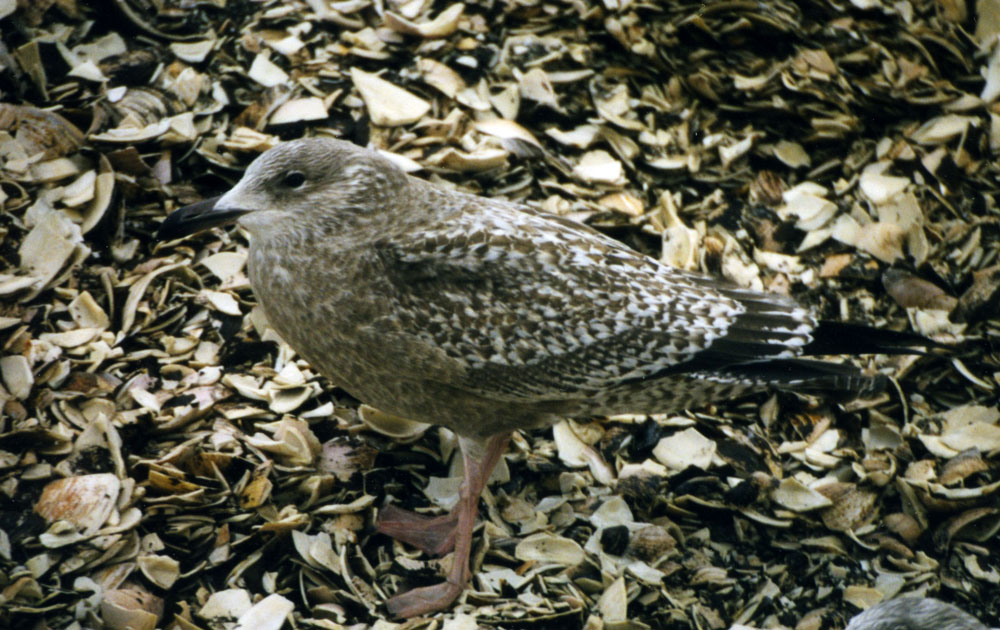
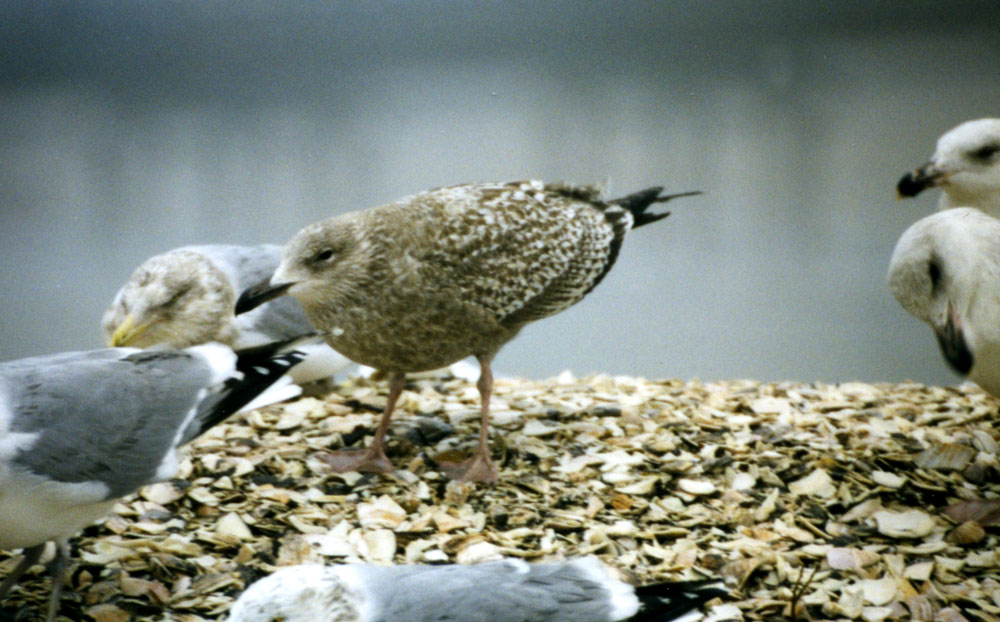
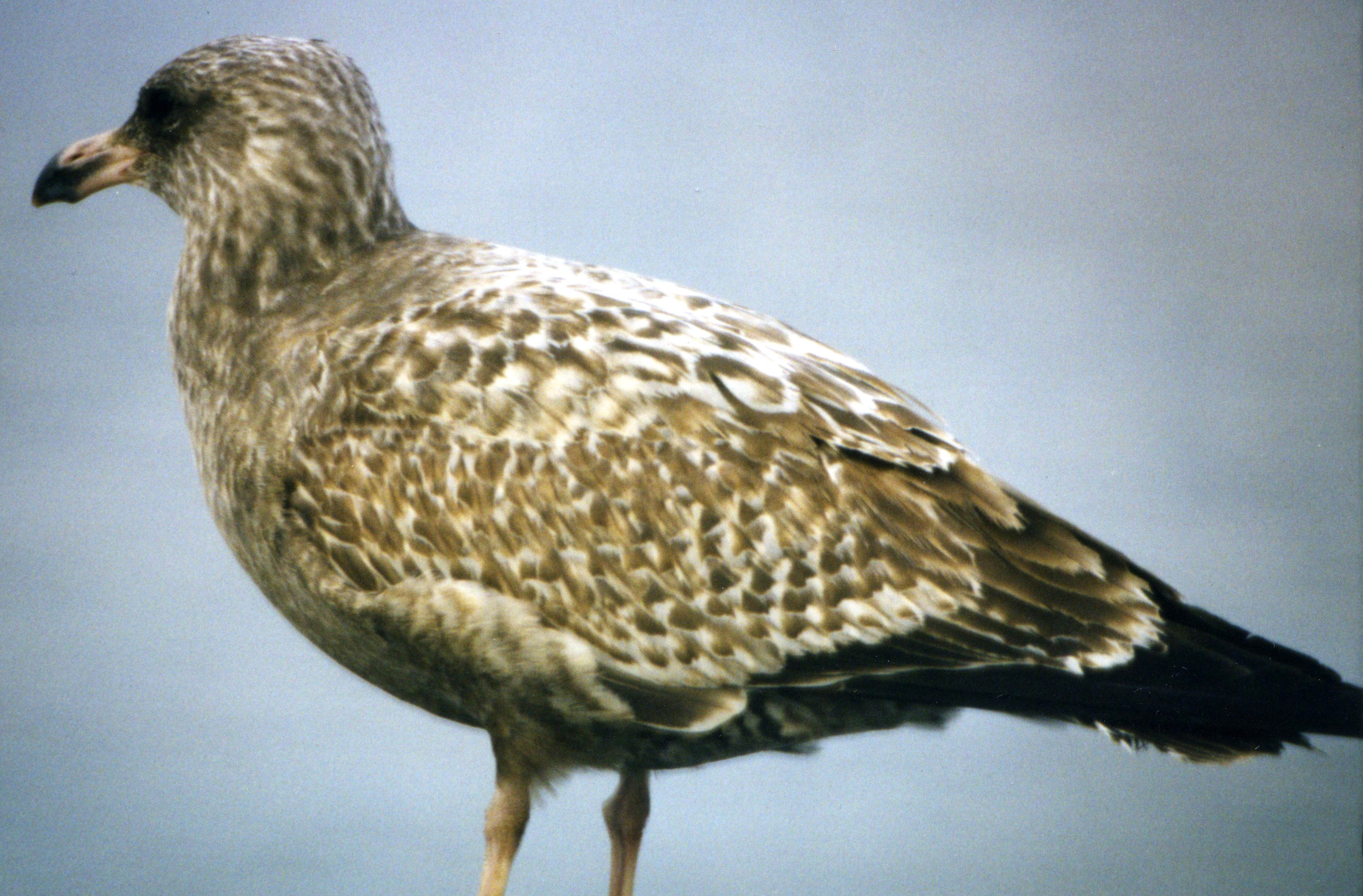
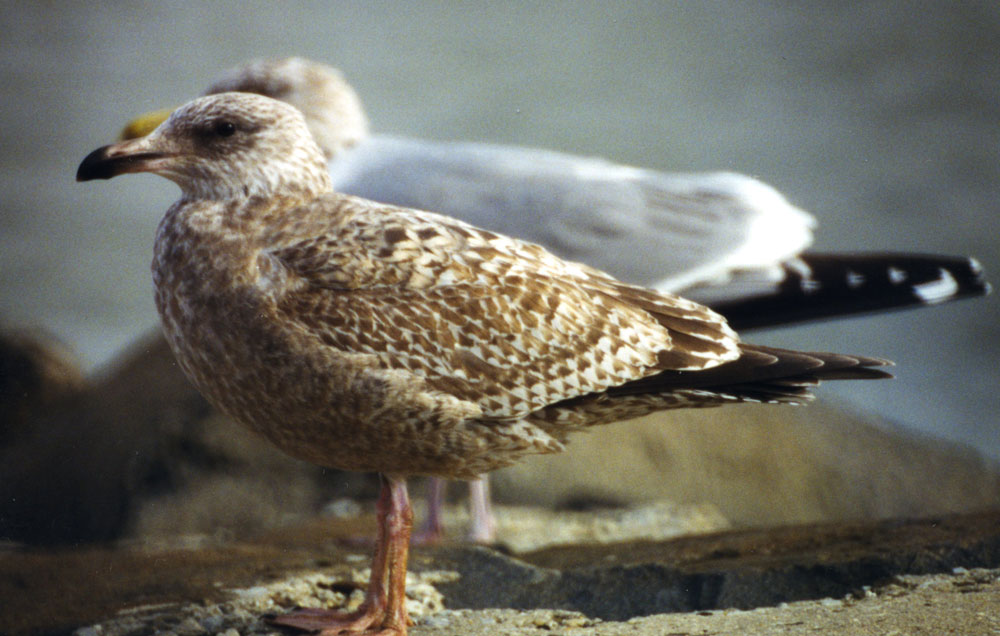
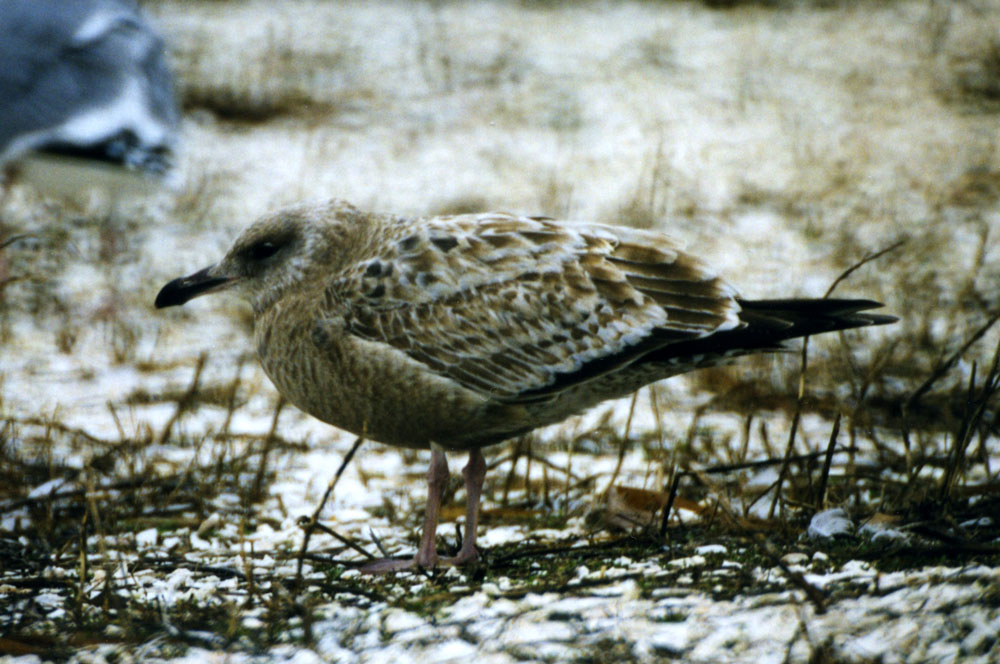
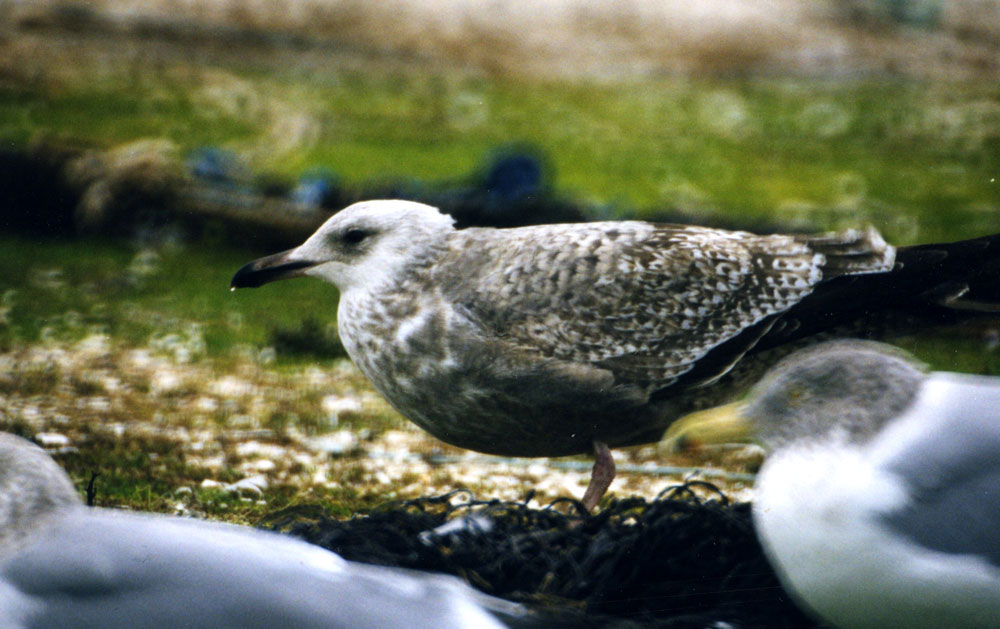
One of the things that prompted me to start looking at these birds was seeing a first-winter Herring Gull at Cape May with lots of white at the base of the tail, more like the European subspecies. I called the first one a “European” Herring Gull, because it had an obvious tail band and also showed these other differences – sleek, neatly-checkered, pale-faced, pale rumped – and it was only after seeing two more and some intermediates that I started to think this was a variation of American Herring Gull.
Birds like the one in the first two photos above were scarce at Cape May. I saw up to three in a day, and probably about 10 individuals during the course of the winter of 1997-98. They appeared very late in the fall, with most seen in Jan-Feb. That was among a relatively small number of gulls present in Cape May Harbor. If I took a wild guess I would say that somewhere under 5% of all the first-winter gulls I saw were of this type.
Adults are less variable, and therefore harder to distinguish. I was able to pick out adults that were late to develop breeding colors in the spring, and assuming those were from farther north I looked at head streaking, wingtip pattern, and mantle color to see if I could find any consistent patterns, but with a small sample size and casual study I could not.
Figuring out where these birds come from, if they even have a “home range”, will be a real challenge and will require looking very carefully at a lot of gulls in a lot of places. New DNA studies point to possible subdivisions of North American Herring Gulls, and for someone with the time, energy, and meticulousness, this offers one of the better opportunities for discovery in North American birds.


Hi David,
Very interesting post. By sheer coincidence, Martin Garner from the UK also is talking about variability in European first winter Herring Gulls over at his website at Birding Frontiers. Thought you might want to check out his discussion as well. Good stuff!
Thanks for posting.
Jody Enck
Hi David!
Another good set here.
http://www.martinreid.com/Gull%20website/hsmitp82.html
Hi
I was using your bird guide to prepare for a show on id winter gulls,
My question is about 1st winter herring gulls. What exactly is a first winter herring gull-
Is it the first winter the gull experiences after it leaves the nest.
The guide shows juvenile Aug-Nov then below 1st winter Sep-Apr.
I’m assuming 1st winter is a one year old bird.
Thanks for your help
I enjoyed your guide
John Heidecker
Hi John, First winter means the first winter after the bird hatched, when it is around six months old. The dates indicated in the guide overlap because some individuals (long-distance migrants from far northern nesting sites) retain juvenal plumage until November or even longer, while other individuals (e.g. from relatively sedentary populations such as New England) molt from juvenal to first-winter plumage in September. Hope that helps.
Best, David